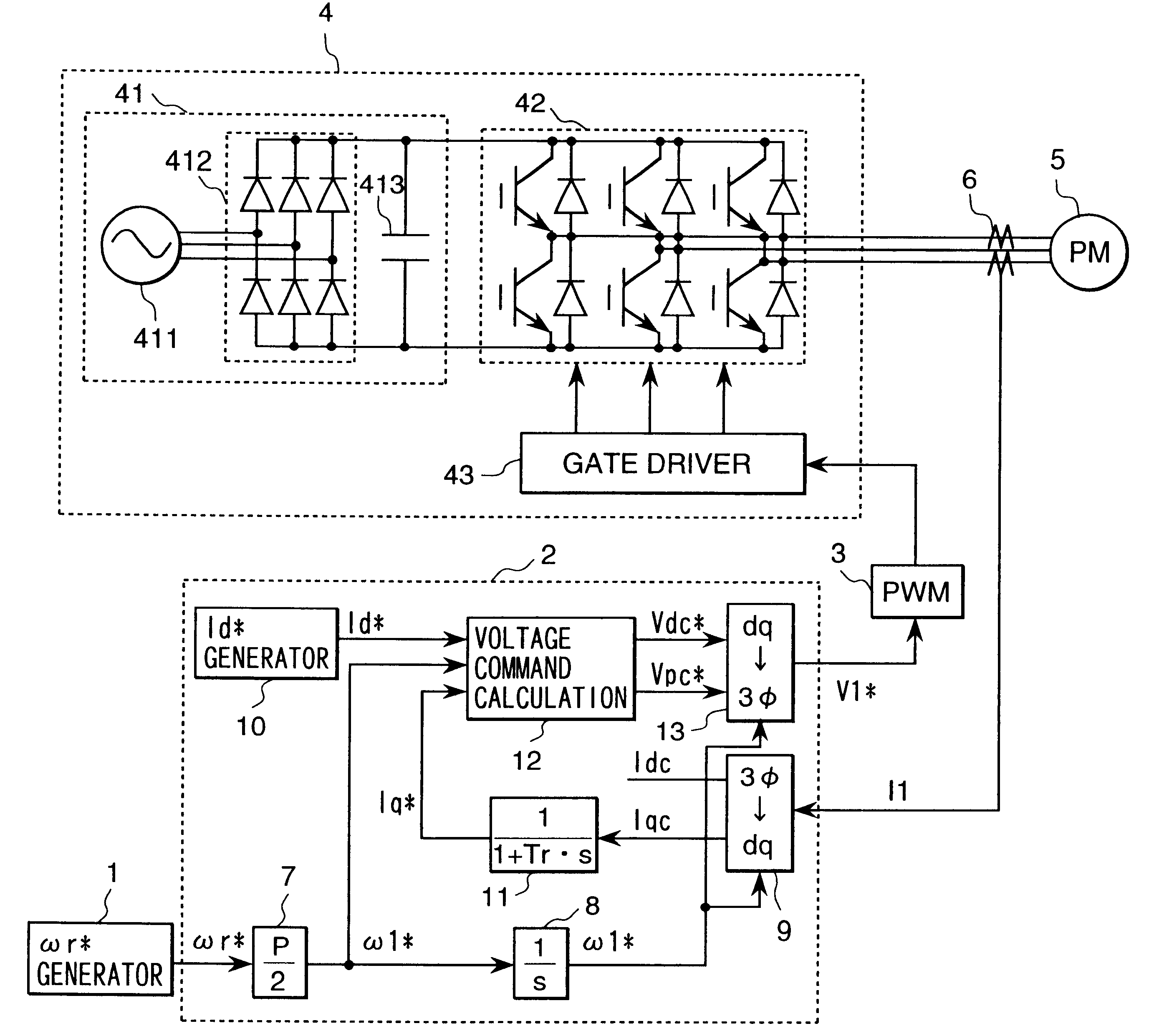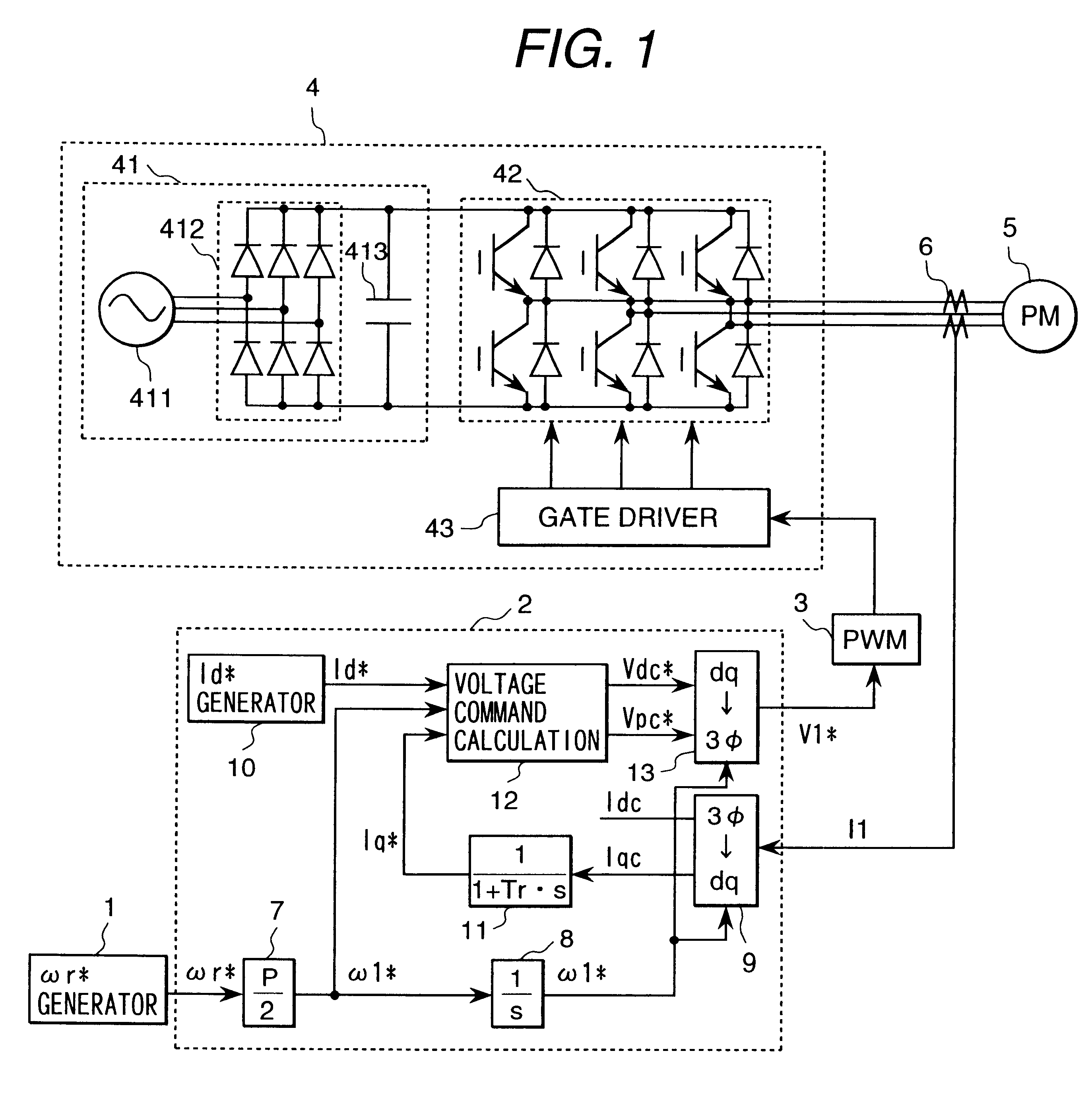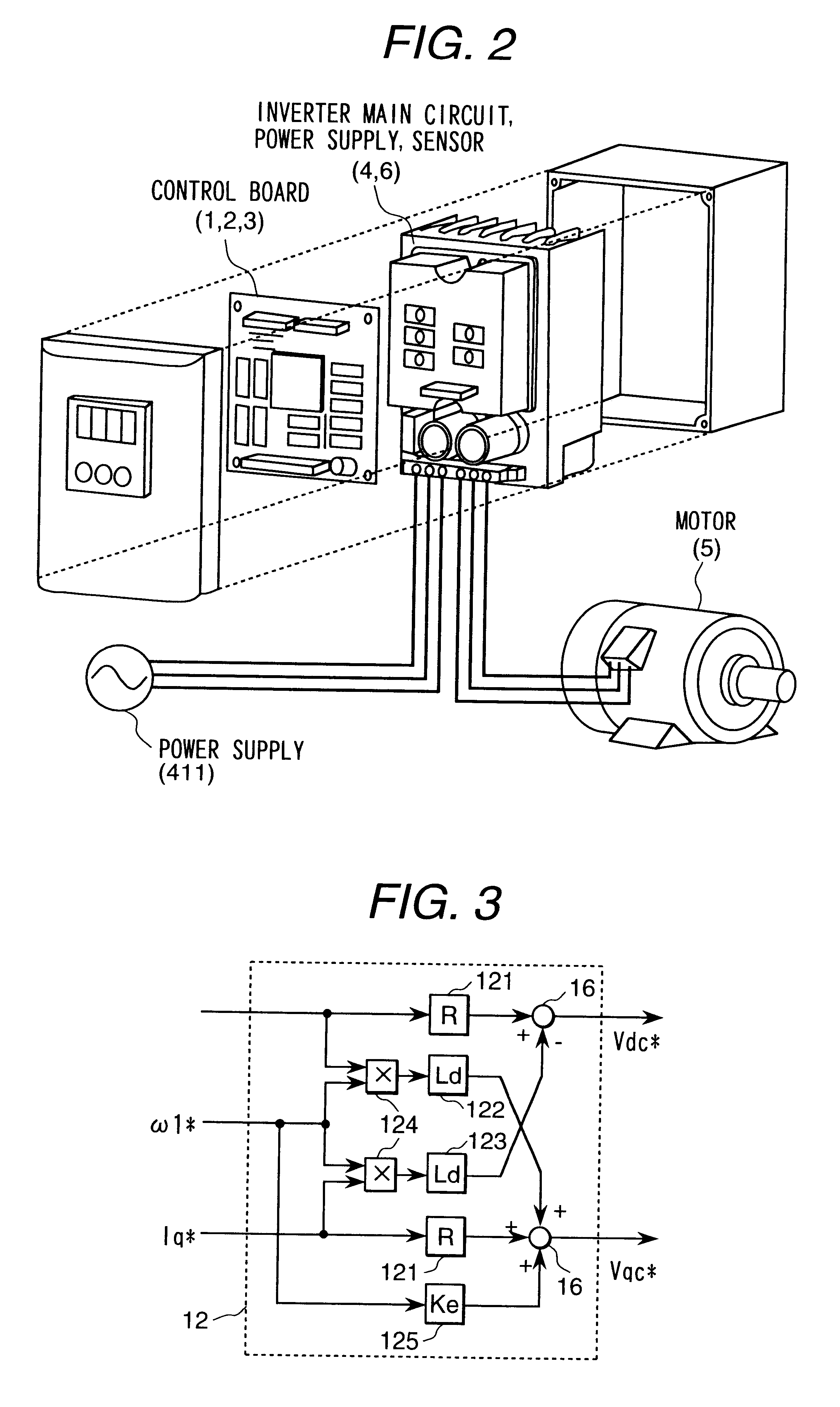Driving device for synchronous motor
a technology of synchronous motors and driving devices, which is applied in the direction of motor/generator/converter stoppers, dynamo-electric gear control, and dynamo-electric converter control. it can solve the problems of generating transient vibration, and avoiding the use of synchronous motors
- Summary
- Abstract
- Description
- Claims
- Application Information
AI Technical Summary
Problems solved by technology
Method used
Image
Examples
embodiment 1
(Embodiment 1)
FIG. 1 shows a constitution of the present embodiment. In FIG. 1, 1 is a speed command generator providing a motor with a rotation speed command .omega.r*, 2 is a controlling device calculating a voltage impressed on the motor, 3 is a PWM (Pulse Width Modulation) pulse generator generating pulses driving an inverter 4 based on a voltage command V1*, 4 is the inverter driving the motor, 5 is the synchronous motor (referred as motor hereafter) as a control subject, 6 is a current detector detecting the current of the motor 5, 7 is a conversion gain converting the rotation speed command .omega.r* into an electric angular frequency command .omega.1* of the motor (P is the number of poles of the motor), 8 is an integrator calculating an AC phase .theta.c inside the controlling device based on the electric angular frequency command .omega.1*, 9 is a dq coordinate converter converting a current value on a three-phase AC axis to components on dc / qc axes, which are rotation coo...
embodiment 2
(Embodiment 2)
In the present embodiment, a controlling device 2B in FIG. 4 is used in place of the controlling device 2 in FIG. 1. In FIG. 4, 14 is an axis error estimator estimating and calculating an axis error between d / q axes of the motor and dc / qc axes of the control axes. 15 is a zero generator providing the axis error with a zero command. 16 is an adder adding (or subtracting) input signals. 17 is a magnetic pole estimation gain calculating a correction value for the electric angular frequency command .omega.1* using the axis error.
The following section describes the operation of the present embodiment. The axis error estimator 14 estimates and calculates an error .DELTA..theta. between d / q axes and the dc / qc axes. .DELTA..theta. is an error component of the dc / qc axes observed from d / q axes as indicated in FIG. 23. .DELTA..theta.c, which is an estimated value of .DELTA..theta., is calculated with Equation (3). ##EQU2##
In the equation above, L=Ld=lq and a non-salient type mot...
embodiment 3
(Embodiment 3)
In the present embodiment, a controlling device 2C in FIG. 5 is used in place of the controlling device 2 in Embodiment 1. 18 is a torque controller calculating the q axis current command Iq* based on the estimated value of the axis error .DELTA..theta.c in FIG. 5. The difference of the present embodiment from Embodiment 2 is that the Iq* generator 11 is removed, and a torque controller 18 is added.
The following section describes the operation of the present embodiment. The present embodiment determines the current command Iq* using the estimated value for the axis error .DELTA..theta.c. The phase .theta.c of AC voltage impressed on the motor is mainly given by integrating the electric angular frequency .omega.1*. When a load changes suddenly, the estimated value for the axis error .DELTA..theta.c changes first. Though the electric angular frequency .omega.1* is corrected through the magnetic pole estimation gain 17, it takes a period corresponding to a response set fo...
PUM
 Login to View More
Login to View More Abstract
Description
Claims
Application Information
 Login to View More
Login to View More - R&D
- Intellectual Property
- Life Sciences
- Materials
- Tech Scout
- Unparalleled Data Quality
- Higher Quality Content
- 60% Fewer Hallucinations
Browse by: Latest US Patents, China's latest patents, Technical Efficacy Thesaurus, Application Domain, Technology Topic, Popular Technical Reports.
© 2025 PatSnap. All rights reserved.Legal|Privacy policy|Modern Slavery Act Transparency Statement|Sitemap|About US| Contact US: help@patsnap.com



